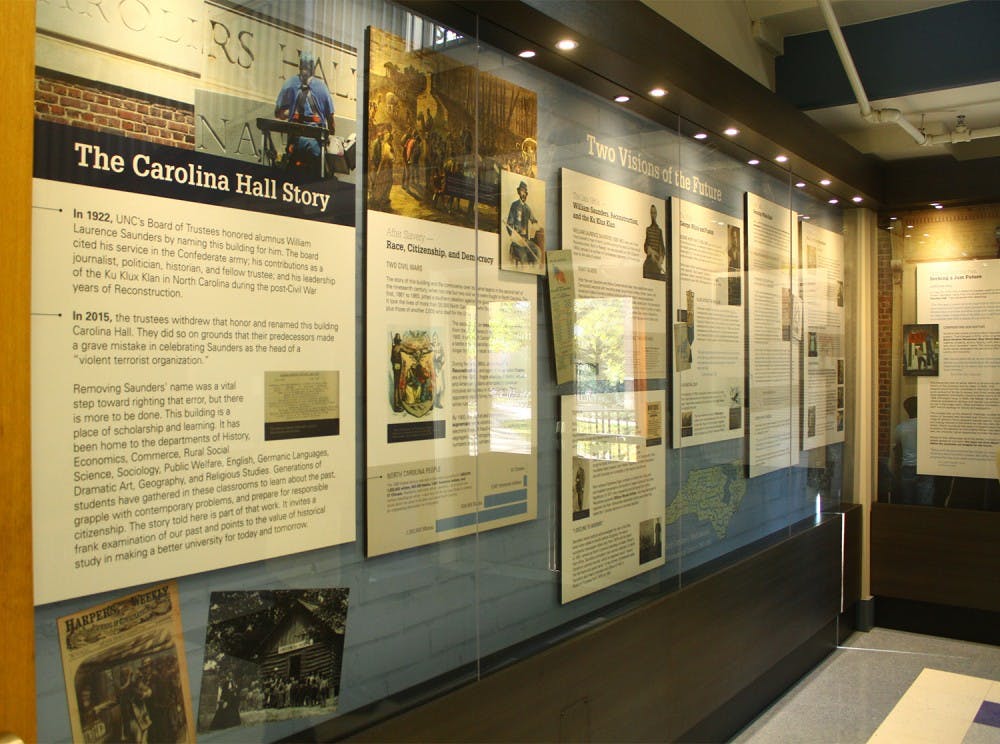Cecelia Moore, the project manager of the Task Force on UNC-Chapel Hill History, said Chancellor Carol Folt instructed the task force in 2015 to create an interpretation of the history of Carolina Hall.
“The initial idea was maybe perhaps a marker outside, but we pretty quickly decided that what we wanted to say wouldn’t fit on a small marker,” Moore said.
Winston Crisp, the vice chancellor for student affairs and member of the task force, said it was impossible to tell the story of Carolina Hall without telling the story of race, white supremacy and the Ku Klux Klan in North Carolina.
“This is not, in any way shape or form, an entire history of this campus or this building, let alone these issues,” Crisp said. “I hope that it will spur people to want to learn more about the history of not only this building but of the campus and of the area and of the region.”
Jim Leloudis, a history professor and member of the task force, said a guiding factor in this exhibit was to avoid making the exhibit a memorial to William Saunders, even if it was a negative one.
“We’re trying to tell a really high-level story about the history of race and politics and citizenship and democracy in North Carolina in that long period after the Civil War, and as you’ll see it’s really — I think it’s a very powerful and compelling story,” Leloudis said. “You could think about that period, that long period, as being a kind of crossroads time in the history of the state.”
Leloudis said important historical themes featured on the exhibit’s six panels include the Civil War, Reconstruction, Fusion and both white supremacist and multiracial politics in North Carolina throughout the late 19th and early 20th centuries.
Key figures in the exhibit include William Saunders, George Henry White and Charles Aycock. The last panel is dedicated to the Board of Trustees’ decision to rename the building as a result of advocacy by campus groups such as The Real Silent Sam Coalition and the Black Student Movement.



